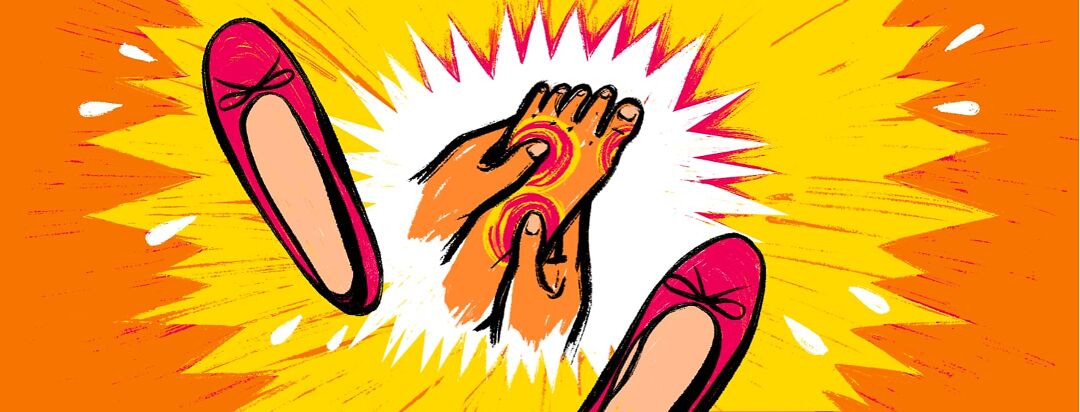Ballet Flats Aren't Always Arthritis-Friendly Shoes
There must be 100 pairs of ballet flats in my closet. Over the years, my mum has bought me so many! She always told me to wear them to "dress up" my outfit and assumed they were an arthritis-friendly alternative to high heels.
But as much as I can, I wear boots, sneakers or sandals- for me, flats can be more painful than (kitten) high heels!
There is so much more to reducing foot pain
Growing up with psoriatic arthritis, I was always told to wear flats as a formal shoe. For a long time, I did - but suffered greatly. I wore flats to my high school graduation and was in a ton of pain, but wore wedges to my college graduation and was perfectly comfortable.
It's surprising for some people to hear, but the quality of the shoe and how it holds our feet is more important than shoe height. People think so much about heels and flats that they forget that the shape, materials, sole, and lining of our shoes are essential to reducing pain.
Everybody's feet are different
For me, flats are painful in a different way than high heels. In my case, my feet naturally swell in areas where the edges of the ballet flat are. As a result, I get awful blisters from the pressure and friction as the day goes on.
I don't even need to walk for my feet to blister- all it takes is a little swelling in the wrong spot. Plus, many pairs are cheaply made and may offer no "shock absorber" in the sole, which can be painful.
And while I'm picking on flats right now, they're not the only offenders: I'm looking at you, strappy sandals. And it's not to say that all ballet flats are bad. That's not the case at all! There are lots of well-made flats out there that offer a good base, arch support, and even have straps.
We need to consider so much more. Sometimes a small wedge can help a lot. It depends on the person and their situation.
The dread of shoe shopping
Like many with arthritis, I dread shoe shopping. Even the most comfortable pair in the store can be painful when you bring them home. It makes it so frustrating and discouraging.
Over the years, I've begun to take a different approach to shoe shopping. I try to consider the areas that give me the most trouble, and I've even marked the specific areas that tend to get blisters on an old sock or nylon before going shopping.
Featured Forum
View all responsesWhile shopping for winter shoes, I consider how my ankles tend to flare up and need extra support. When shopping for summer shoes, I think of how my Achilles and the top of my foot swells up badly.
When I try on shoes, I try to consider how every strap, buckle, and lace might affect those areas negatively. For example, sandals that have one or two large straps tend to be better for me because it spreads the weight out across the foot.
Multiple, small straps sometimes cause many small pressure points that can be badly irritated. Of course, a wide strap on the wrong spot can be just as problematic, but generally, I have more success with those.
Material makes a difference!
Natural materials are essential for the body of the shoe. Plastic, synthetics, etc. have a tendency not to stretch or adapt over time. However, leather, cotton, and other natural fibers wick moisture away and tend to expand and change with us over time.
The material of the sole also can make a world of difference. Rubber is always a good, durable option, but can get heavy over time. Foam is an excellent alternative to rubber, in my experience, because it absorbs impact while being very light.
For me, a chunky sole or a small heel is vital as it helps protect my ankles and heels from taking a pounding. I've bought a ton of flats over the years, in the hopes that one would be the perfect shoe.
Ultimately, I haven't found one to suit my needs- they tend to blister me. I'm much happier in boat shoes, sneakers, and Earthshoe sandals. It takes a lot of trial and error to find a shoe that doesn't hurt, but once you find one, run with it!

Join the conversation